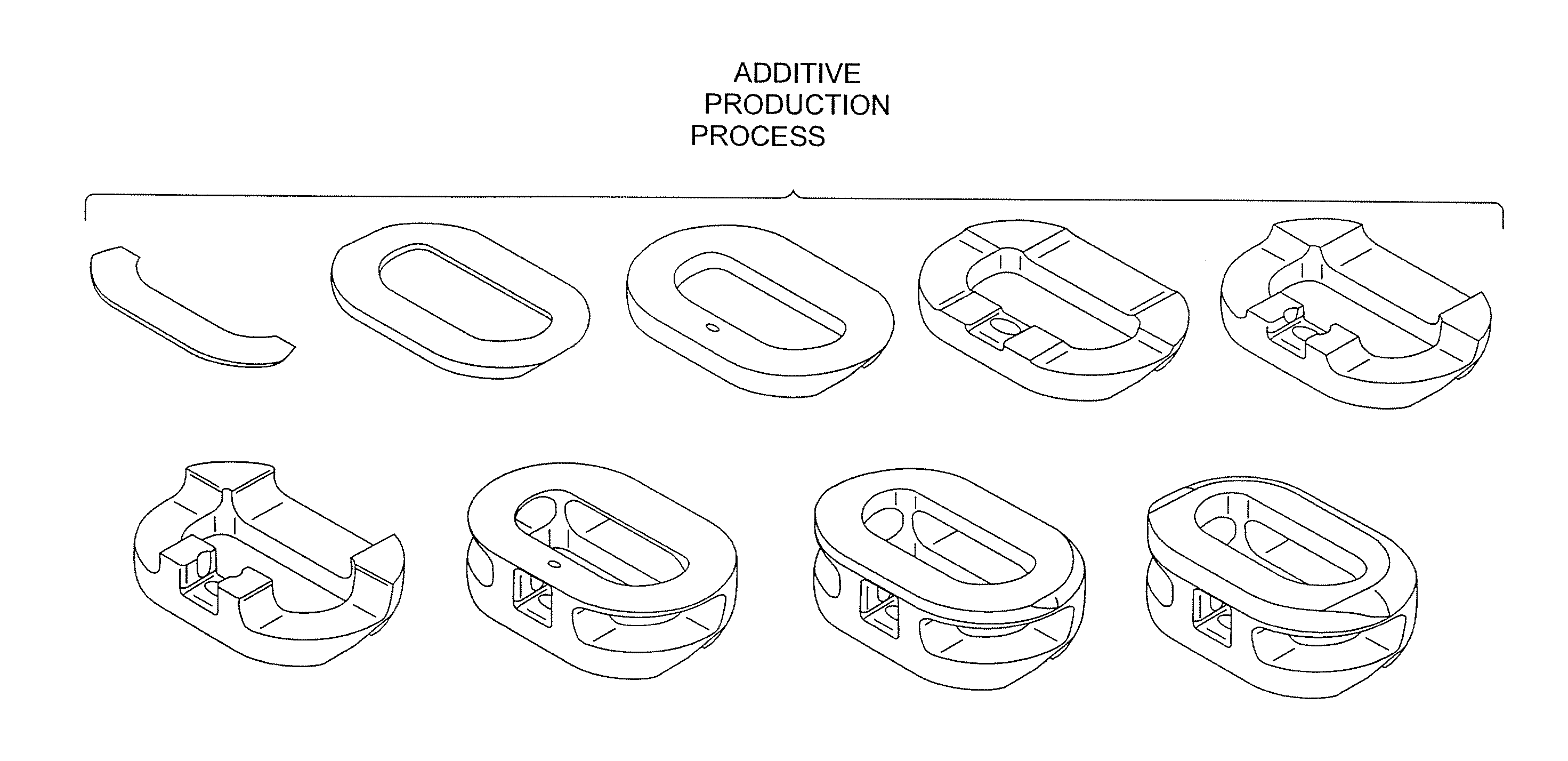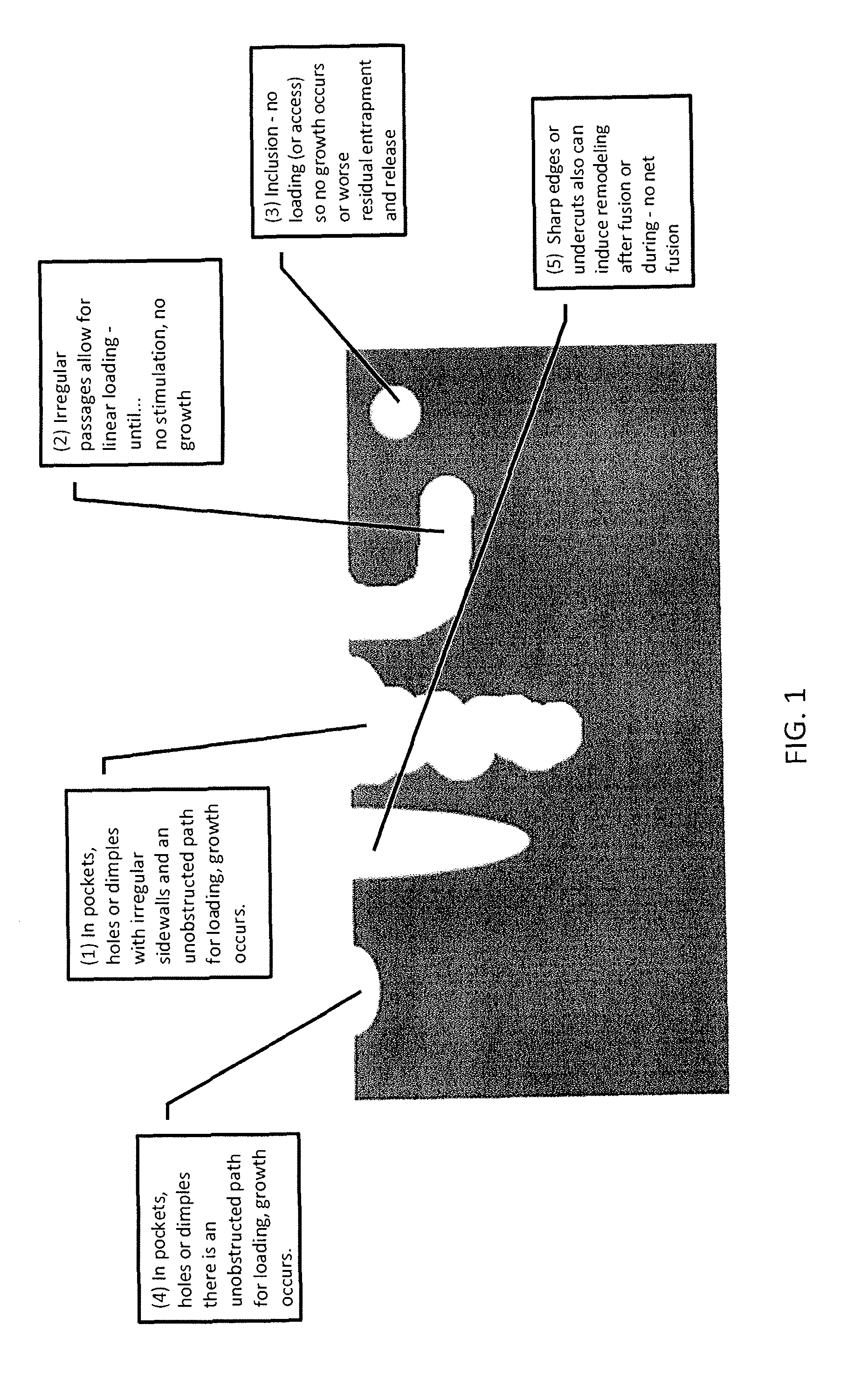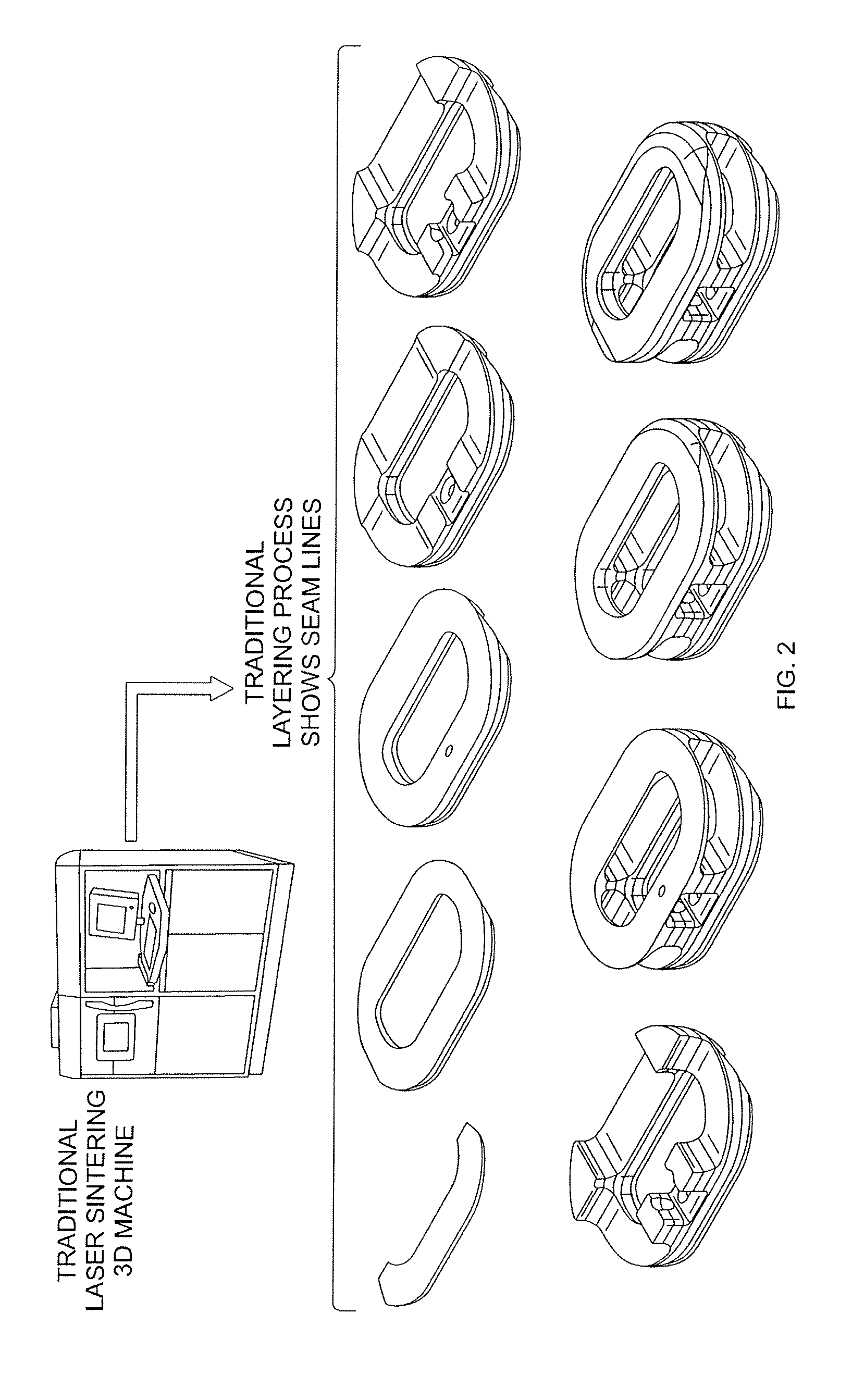Additive and Subtractive Manufacturing Process for Producing Implants with Homogeneous Body Substantially Free of Pores and Inclusions
a manufacturing process and homogeneous body technology, applied in the field of additive and subtractive manufacturing methods for fabricating medical implants, can solve the problems of cell remodeling, reduced surface area available for contact and frictional stabilization, and inability to form bone, so as to enhance bone growth or bone fusion
- Summary
- Abstract
- Description
- Claims
- Application Information
AI Technical Summary
Benefits of technology
Problems solved by technology
Method used
Image
Examples
Embodiment Construction
[0032]Various terms relating to aspects of the present invention are used throughout the specification and claims. Such terms are to be given their ordinary meaning in the art, unless otherwise indicated. Other specifically defined terms are to be construed in a manner consistent with the definition provided herein.
[0033]As used herein, the singular forms “a,”“an,” and “the” include plural referents unless expressly stated otherwise.
[0034]The terms “subject” or “patient” are used interchangeably. A subject may be any animal, including mammals such as companion animals, laboratory animals, and non-human primates. Human beings are preferred.
[0035]It is believed that non-porous structures with textured surfaces stimulate bone growth and bone fusion, and enhance implant integration, and that load forces from compression and tension stimulate bone growth (FIG. 1). Accordingly, it is desired that the surface texture of metallic implants is intentionally designed, including the texture-fea...
PUM
| Property | Measurement | Unit |
|---|---|---|
| Length | aaaaa | aaaaa |
| Length | aaaaa | aaaaa |
| Length | aaaaa | aaaaa |
Abstract
Description
Claims
Application Information
 Login to View More
Login to View More - R&D
- Intellectual Property
- Life Sciences
- Materials
- Tech Scout
- Unparalleled Data Quality
- Higher Quality Content
- 60% Fewer Hallucinations
Browse by: Latest US Patents, China's latest patents, Technical Efficacy Thesaurus, Application Domain, Technology Topic, Popular Technical Reports.
© 2025 PatSnap. All rights reserved.Legal|Privacy policy|Modern Slavery Act Transparency Statement|Sitemap|About US| Contact US: help@patsnap.com



